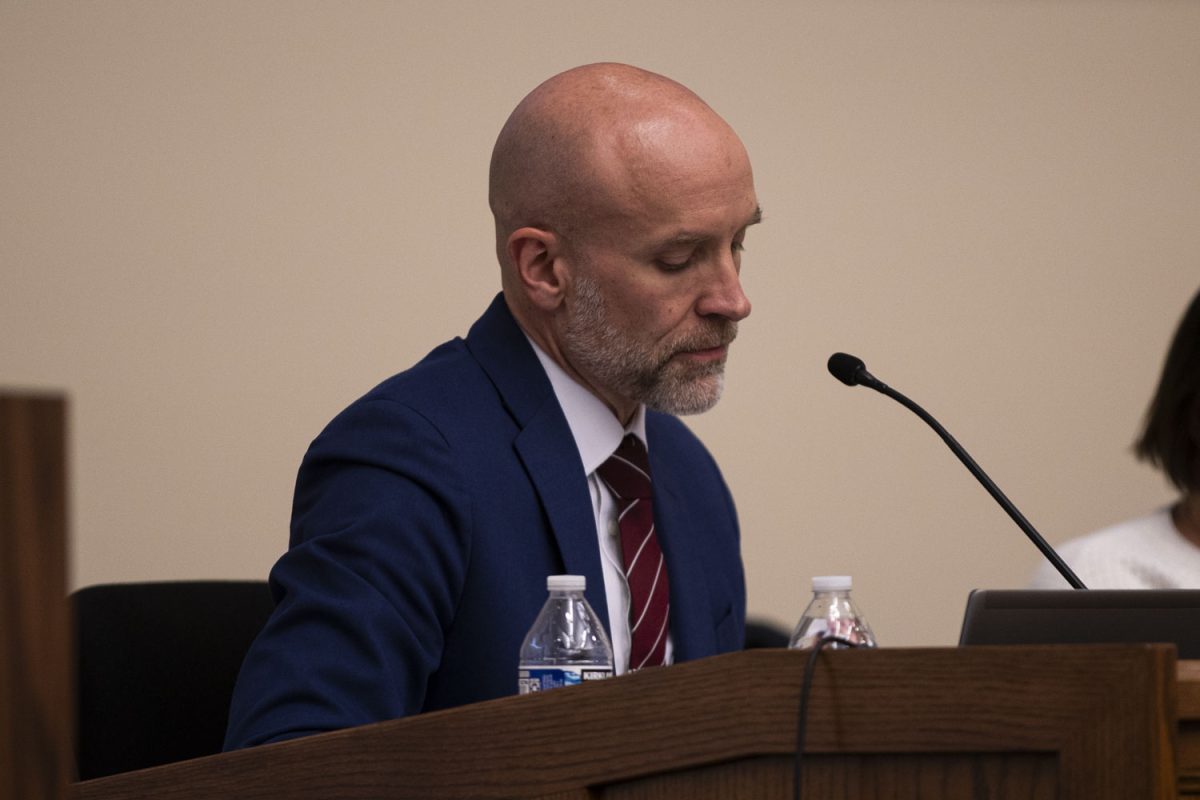Since the age of 5, Will Imbus has had a surgery every six months to lengthen the correctional rods placed in his back to keep up with the growth of his spine. Will has early onset scoliosis.
“His initial surgery, he was cut from right under his neck all the way down to his waist,” Will’s mother, Nicole Imbus, said.
However, Stuart Weinstein, a University of Iowa professor of orthopedic surgery at the UI Children’s Hospital, recommended a new treatment for Will’s scoliosis.
Called the Magnetic Expansion Control Spinal Growing Rod, the new technology allows doctors to lengthen the rod externally to correct the curve of a child’s spine, getting rid of the need for numerous invasive surgeries.
“The [rod] is very different because instead of children going to the operating room every six months, they just come in to the clinic,” Weinstein said. “We have a device that spins the magnet externally, so we can lengthen it without them having to go to the operating room and going through the trauma of having surgery every six months.”
The Imbus family were nervous going into surgery in March to place the rods; however, they were relieved to know that it was the last procedure Will would have to have for the next couple of years.
“I was scared, but it was essentially the same, pain-wise, as his lengthening [surgeries],” Nicole Imbus said. “Of course, it’s scary and emotional … [but] I was feeling so happy because it was his last surgery for a long time, if everything goes OK.”
Will was also happy to have the rod placed, and the nerves he felt before surgery weren’t foreign to him.
“I wasn’t really scared because I’ve had so many lengthenings,” he said. “All you have to do is be calm and listen to what the doctor says … because he is the one that’s going to fix you.”
Now that the rod is placed, Imbus will visit Weinstein in the clinic to have the rod lengthened magnetically every three months.
In most boys, the spine stops growing at around 13 years old, so the rod will save Will from having as many as eight surgeries.
“It really improves their lives,” Weinstein said. “It makes what’s an otherwise difficult problem to be a lot more palatable.”
Will was the second patient at UI Children’s Hospital to have the magnetic rod placed; as of this month, there are 14 children with the rod in Iowa.
According to online Federal Drug Administration documents, the agency approved the rod for marketing in February 2014.
Weinstein said the rod is a new way to treat early onset scoliosis, and new technology can create some apprehension.
“We treat thousands of patients every year with spinal deformities and try to make sure we’re bringing things that are safe and effective to all the patients we serve as soon as they’re available,” he said. “We’re just very fortunate to have wonderful patients and families in Iowa to take care of. They’re very understanding; they deal with adversity so well.”
The Imbus family acknowledge the danger that comes with using a new treatment such as the rod but believe it is the best choice for treating their son.
“It’s amazing; it’s unbelievable that technology has gotten us this far,” Imbus said. “When he was 5 and I felt like there was no other choice than to be cut open every six months … I cannot believe that this opportunity came up. Who would have ever thought that this was possible? I still feel like someone has to pinch me.”






